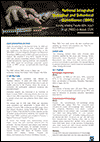Publications on People Who Inject Drugs (PWID)

Resource | Publications,
Consisting of five separate booklets, the World Drug Report 2021 provides an in-depth analysis of the global drug markets and paints a comprehensive picture of the measurable effects and potential impact of the COVID-19 crisis on the world drug problem.
The World Drug Report 2021 is aimed not only at fostering greater international cooperation to counter the impact of the world drug problem on health, governance and security, but also, with its special focus on the impact of the COVID-19 pandemic, at assisting Member States in anticipating and addressing challenges that may arise in the near future.
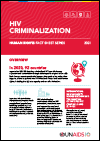
Resource | Fact Sheets,
The 2021-2026 Global AIDS Strategy has bold and critical new targets on realizing human rights, reducing stigma, discrimination and violence and removing harmful punitive laws as a pathway to ending inequalities and ultimately ending AIDS. To aid in the scale up of interventions to remove these societal barriers, UNAIDS has produced a series of fact sheets on human rights in various areas, highlighting the critical need to scale up action on rights. They are a series of short, easy to digest and accessible documents outlining the latest epidemiology, the evidence of the impact of human rights interventions, the latest targets, and international guidelines, recommendations and human rights obligations relating to each topic. Fact sheets released in June 2021: HIV criminalization, HIV and people who use drugs, HIV and gay men and who have sex with other men, HIV and transgender and other gender-diverse people, HIV and sex work, HIV and people in prisons and other closed settings and HIV and stigma and discrimination.
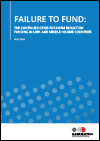
Failure To Fund: The Continued Crisis for Harm Reduction Funding in Low- and Middle-income Countries
Resource | Publications,
This report explores the state of harm reduction funding in low- and middle-income countries, drawing upon existing public data on domestic funding and information collected from international harm reduction donors. The data shows that we are further away from meeting the needs of people who use drugs than ever before.

Resource | Publications,
On 11 March 2020, the World Health Organization declared COVID-19 a pandemic. Since then, the virus has claimed millions of lives and has transformed nearly every aspect of our individual and collective reality. As with all areas of life, drug consumption, related harms and drug markets have been impacted, as have the services established to respond to drug-related problems. During the first weeks of the pandemic, the EMCDDA instigated two rapid assessment studies to identify the initial impact and implications of COVID-19. These studies identified signs of an overall decline in some forms of drug use during the first 3 months of the pandemic, largely as a result of national confinement measures. In addition, many drug services were forced to close or restrict their access, new measures for hygiene and social distancing were implemented, and there was a shift towards greater use of telemedicine.
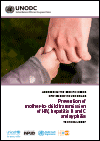
Resource | Publications,
This technical brief provides guidance for the provision of equitable, evidence-informed and human-rights-based services for prevention of mother-to-child transmission (PMTCT) of HIV, hepatitis B and C and syphilis among women who use drugs, and to support countries in their efforts towards elimination of mother-to-child transmission (EMTCT).
As a general principle, all pregnant and breastfeeding women who use drugs should have at least the same access to evidence-based services for PMTCT as women in other populations. Women should not be excluded from health care because of their substance use. All interventions should be voluntary, with informed consent and maintenance of confidentiality, including about a person’s drug use or HIV status.
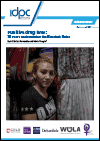
Resource | Publications,
For centuries, criminal laws, justice systems, and prisons have been designed for, and by, men. The 2010 United Nations Rules for the Treatment of Women Prisoners and Non-custodial Measures for Women Offenders, also known as the ‘Bangkok Rules’, break away from this history by establishing the first set of international human rights standards that focus on the specific needs and experiences of women deprived of liberty.
This briefing paper provides analyses the concrete ways in which punitive drug legislation has impacted upon the achievement of the Bangkok Rules, and offers several recommendations on how to translate the commitments set in the Bangkok Rules into drug policy.
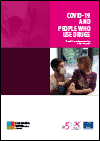
Resource | Publications,
There are many people fighting the COVID-19 pandemic with all their might, but not all of them get much public attention. Among them are the frontline workers who continue to provide much-needed health services to people who use drugs. Every day, they stand up for a group of the most vulnerable people in society: people whose drug dependence often goes hand-inhand with social and health grievances, such as HIV infection, unemployment or homelessness.
Most people who use drugs recognise the seriousness of the current situation. To minimise the risk of COVID-19 infection for themselves and/or others, they show great awareness of the risks and adhere to infection control measures in places where they use drugs or seek help.
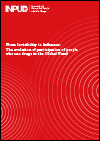
Resource | Publications,
This case study will share the evolution of the participation of people who use drugs in the Global Fund and its national processes. It tells a story of the challenges drug user-led networks face nationally to participate meaningfully in Global Fund proposal development and decision-making. It highlights the progress that has been made with support from the Community, Rights and Gender (CRG) Strategic Initiative (SI). It also showcases the progress, impact and outcomes of people who use drugs participating in the Global Fund, showing the value and effectiveness of both national drug user-led organizations and the key role of the global network in facilitating successful engagement in Global Fund processes. Ultimately, it shows how with the right support, those often left behind can move from invisibility to influence.






